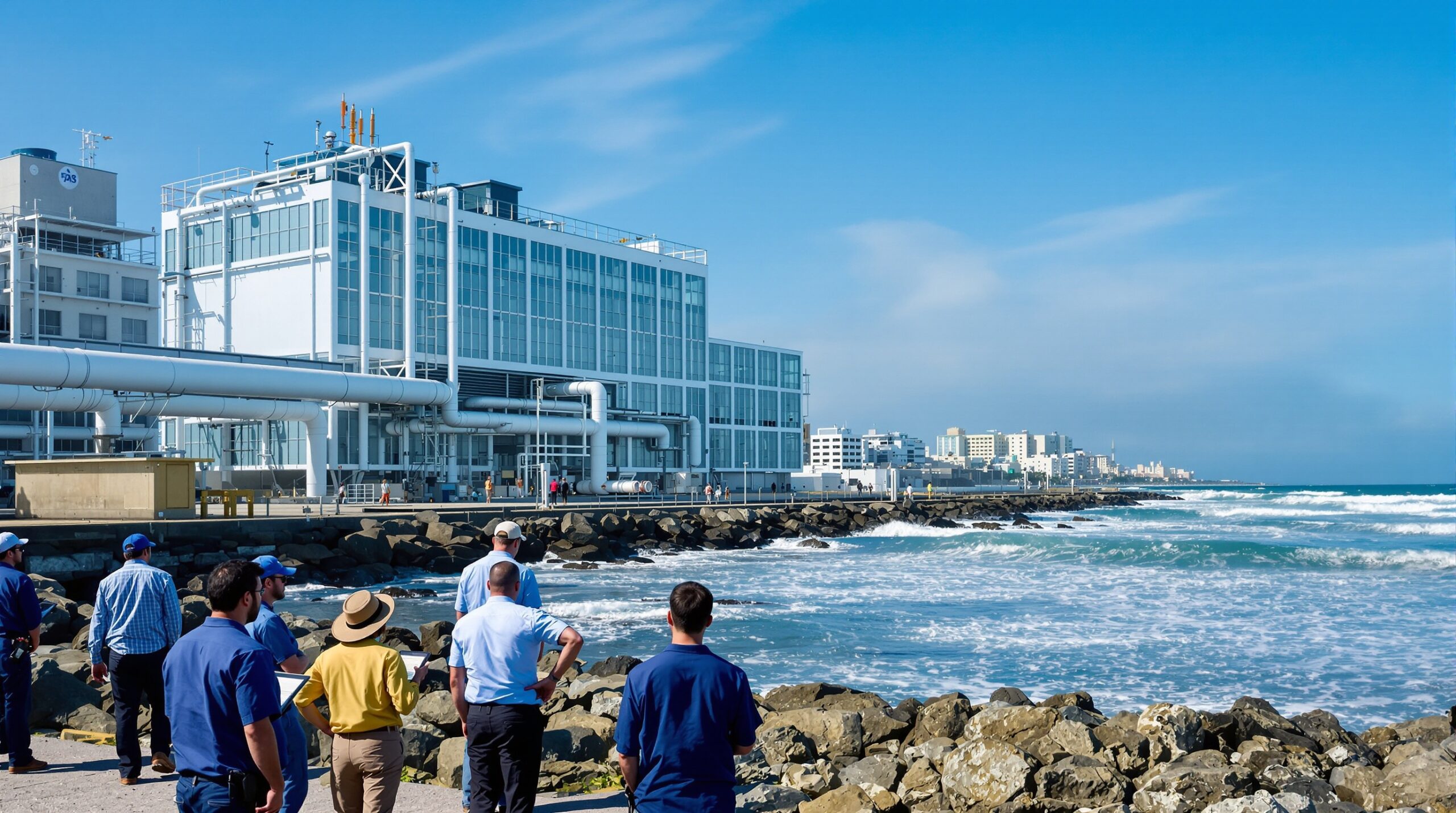Data centers have become the digital backbone of modern economies, powering websites, cloud storage, and critical services. However, their immense energy hunger poses serious environmental challenges. To address data centers’ excessive energy consumption and heat generation, innovative solutions are under investigation. Coastal cities are pioneering the use of seawater-cooled data centers, aiming to revolutionize energy efficiency.
Data Centers and Their Energy Challenge
Data centers house thousands of servers operating continuously, producing significant heat as a byproduct. Keeping these servers cool requires substantial energy input. Traditionally, powerful mechanical chillers or air conditioning systems have been used for cooling, contributing to a large portion of a facility’s total energy bill. According to the International Energy Agency, data centers globally consumed about 1-1.5% of electricity in 2022. As these centers expand to meet digital demands, their energy consumption is expected to climb dramatically.
The Environmental Cost of Conventional Cooling
Most traditional cooling methods for data centers use fresh water, a vital but increasingly scarce resource in many regions. Moreover, mechanical chillers require electricity, often generated from carbon-intensive fossil fuels. This results in high greenhouse gas emissions and considerable operational costs. The heat expelled by data centers, if not managed efficiently, can also affect urban temperatures, worsening the urban heat island effect in coastal cities. As digital infrastructure grows worldwide, finding sustainable cooling methods becomes a high priority.
Why Coastal Cities Are Experimenting With Seawater Cooling
Coastal cities possess a unique advantage: proximity to vast, cool bodies of seawater. Seawater cooling involves drawing in cold seawater to absorb heat from data center equipment. After extracting heat, the seawater is filtered and released back into the sea at a controlled temperature. This eliminates the need for energy-hungry chillers and reduces the use of precious freshwater. Seawater’s constant temperature makes it an ideal, natural heat sink, ensuring consistent and efficient cooling throughout the year.
Pioneering Trials Across the Globe
Several coastal cities are undertaking pilot projects to test the viability of seawater-cooled data centers. In Reykjavik, Iceland, the data center company Verne Global uses cold seawater to cool servers, leveraging the region’s abundance of clean water. In Singapore, the National Data Center has developed a prototype seawater cooling system. This technology is also being trialed in Helsinki, Finland, where deep seawater is utilized in a closed-loop system.
Case Study: Microsoft’s Underwater Data Center
Microsoft has experimented with its Project Natick, submerging data center modules off the coast of Orkney, Scotland. These pods relied on cold seawater for ambient cooling, drastically reducing the energy needed for traditional cooling systems. The project ran for two years and achieved excellent reliability records. The experiment provided actionable insights into the viability of underwater or coastal data centers globally.
How Seawater Cooling Systems Work
Seawater cooling systems operate by pumping seawater through heat exchangers, where it absorbs heat from data center machinery. The warmed seawater is then filtered and released or recirculated, depending on local environmental policies. Temperature and filtration processes are strictly monitored to safeguard marine ecosystems. Systems are designed to avoid raising the local seawater temperature significantly, minimizing ecological risks.
Advantages of Closed-Loop vs. Open-Loop Systems
Closed-loop systems recirculate seawater within the data center without discharging it directly back into the ocean. This method reduces the risk of ecological disruption while maintaining high energy efficiency. Open-loop systems, by contrast, release heated water back into the sea but require thorough environmental assessments. Each city chooses the method best suited to its regulations and environmental context.
Energy and Cost Savings Benefits
Initial reports from pilot sites suggest seawater cooling reduces a data center’s electricity use for cooling by up to 70%. This reduction translates into lower operating costs and a smaller carbon footprint. By removing the need for chillers and reducing reliance on fabricated refrigerants, these systems also generate less electronic waste. For cities striving for sustainability targets, seawater cooling offers a reliable pathway to greener digital infrastructure. Over time, such savings can be reinvested in other urban sustainability initiatives.
Environmental Concerns and Safeguards
Despite its promise, seawater cooling raises environmental concerns. Rapid and significant heating of seawater could endanger marine life near discharge points. Most modern systems carefully monitor both intake and return water to prevent ecological damage. Filtration mechanisms remove particulates, and water is often cooled before re-entry into the sea. Regulatory oversight ensures data centers meet environmental guidelines and protect marine habitats. Continuous research helps optimize designs, balancing operational needs with ecological responsibility.
Scalability and Future Potential
The scalability of seawater-cooled data centers remains under close examination. Coastal cities with consistent seawater access and mild climates present ideal conditions. Expanding these systems requires local adaptation, particularly in areas prone to marine pollution or temperature extremes. Engineers are investigating hybrid models that combine seawater cooling with renewable energy for maximum sustainability. Success in these environments could inspire inland cities to explore similar natural cooling techniques, such as using river or lake water responsibly.
Challenges and Opportunities for Wider Adoption
Technical hurdles, regulatory constraints, and public perception all influence the pace of seawater cooling adoption. Building and maintaining infrastructure resistant to saltwater corrosion demands specialized materials and periodic upkeep. Local governments must establish robust monitoring and regulation protocols to preserve marine health. Public education campaigns can highlight the benefits and address potential misconceptions. Collaboration between utilities, tech firms, and city planners will be crucial for scaling up these innovative cooling solutions.
Conclusion: Charting a Sustainable Digital Future
Experimentation by coastal cities with seawater-cooled data centers marks an innovative step toward energy-efficient digital infrastructure. These projects exemplify the synergy between technological progress and environmental stewardship. As results accumulate, other regions will observe, adapt, and potentially adopt similar methods. Through inventive engineering and committed cooperation, the vision for sustainable, low-carbon data centers could soon become a global reality, benefiting both cities and the planet.

